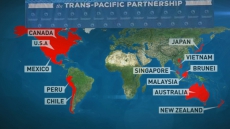TORONTO — A Canadian photographer's quest to come to grips with the long war in Afghanistan is the subject of a new documentary that takes viewers along for a harrowing ride with seemingly no destination.
It's perhaps that very lack of resolution — even more than the ugly in-your-face realities of the effort to defeat a shadowy enemy — that makes Louie Palu's self-narrated journey so disturbing.
"The experience is beyond the photos," Palu says as he prepares to leave the blighted country. "The more I see, the less I understand."
Palu, 47, shot hours of video and countless photographs over close to two years he spent on the ground between 2006 and 2010 in Kandahar, the hotbed of a determined effort to push out western forces from the country and overthrow the government they backed.
He ventured out on numerous patrols and combat operations with Canadian, American and Afghan forces in their efforts to find and neutralize the elusive enemy.
Through his lens, he says, he hoped to capture what it was coalition soldiers were doing, so folk back home could really understand. It was a near-impossible task, he concedes.
"After five years of working in Kandahar, I'm not sure any of my work connects to anyone," he ponders. "How can I possibly convey the reality of war?"
His efforts to enlighten folk back home is at the core of his 75-minute "Kandahar Journals," slated to air nationally on the CBC and the Documentary Channel on Oct. 6. It's no Hollywood production. Instead, his often shaky, small-cam video interspersed with photographs covers a war from the mundane and banal to the beyond brutal, with little gloss or fanfare.
Palu and his cameras tag along behind the soldiers, never knowing whether their next steps will be their last, never knowing the whereabouts of an enemy dissolved in the population until the sporadic gunfire erupts. During one mission break, Canadian Sgt. Matt Snoddon sums up the paradox for the camera:
"There's no easy way to define when trouble's coming, or when trouble's not there at all," Snoddon says.
"In almost a year here, I haven't seen a single Taliban but I'm pretty sure I've talked to a lot of them. There's probably a lot more rubbing elbows with the enemy than we even think."
Despite his terror at losing his legs to a makeshift landmine, Palu pushes to find what war correspondents refer to as the "bang bang" — as if reaching the sharpest end of the pointy military stick would reveal the real war and that in turn would yield some hidden truth about its purpose.
The problem, given the hit-and-run nature of the insurgency, was that the "bang bang" of Kandahar was wholly unpredictable: days of uneventful patrols or missions punctuated by moments of all too real terror, of maiming, of death and destruction in the dust.
Documenting such fleeting moments — few and far between — is monstrously difficult, even for the skilled photographer, so Palu spent time with American medevac teams — the flying paramedics of the war zone — in an effort to capture the "full cycle of what war really is."
The reality, he quickly discovers, is soaked red.
"Blood and carnage," he narrates. "The war has finally fully found me."
While the larger meaning remains veiled by the dust of Kandahar, the documentary does convey the toll exacted on Palu for getting too close to the violence, starting when he photographed the bits and pieces of a suicide bomber in 2006.
Another unsettling scene shows someone mopping up blood, leaving a gleaming floor. The psychological stains are not so easily erased.
"It will take so much time to move on," Palu says.
Co-written by Murray Brewster, who covered the war extensively for The Canadian Press national news agency, the documentary premiered at the Canadian War Museum in Ottawa on Sept. 24. Devin Gallagher co-directed with Palu.





